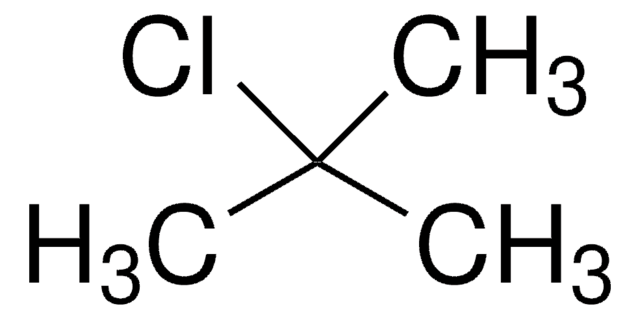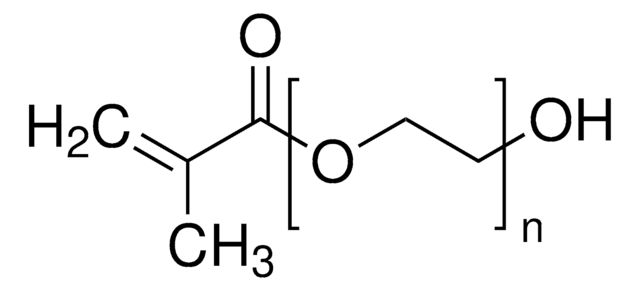360538
tert-Butanol
ACS reagent, ≥99.0%
Sinonimo/i:
2-Methyl-2-propanol, tert-Butyl alcohol, Trimethyl carbinol
About This Item
44 mmHg ( 26 °C)
Prodotti consigliati
Grado
ACS reagent
Livello qualitativo
Densità del vapore
2.5 (vs air)
Tensione di vapore
31 mmHg ( 20 °C)
44 mmHg ( 26 °C)
Saggio
≥99.0%
Stato
solid or liquid
Temp. autoaccensione
896 °F
Limite di esplosione
8 %
Impurezze
≤0.001 meq/g Titr. acid
≤0.01% formaldehyde
≤0.1% water
Residuo dopo evaporazione
≤0.003%
Colore
APHA: ≤20
Indice di rifrazione
n20/D 1.387 (lit.)
pH
7 (20 °C)
P. ebollizione
83 °C (lit.)
Punto di fusione
23-26 °C (lit.)
Densità
0.775 g/mL at 25 °C (lit.)
Stringa SMILE
CC(C)(C)O
InChI
1S/C4H10O/c1-4(2,3)5/h5H,1-3H3
DKGAVHZHDRPRBM-UHFFFAOYSA-N
Cerchi prodotti simili? Visita Guida al confronto tra prodotti
Descrizione generale
It is used in:
- Routine chemical synthesis
- Drying & purification
- Critical labware cleaning
Applicazioni
Avvertenze
Danger
Indicazioni di pericolo
Consigli di prudenza
Classi di pericolo
Acute Tox. 4 Inhalation - Eye Irrit. 2 - Flam. Liq. 2 - STOT SE 3
Organi bersaglio
Central nervous system, Respiratory system
Codice della classe di stoccaggio
3 - Flammable liquids
Classe di pericolosità dell'acqua (WGK)
WGK 1
Punto d’infiammabilità (°F)
59.0 °F - closed cup
Punto d’infiammabilità (°C)
15 °C - closed cup
Scegli una delle versioni più recenti:
Possiedi già questo prodotto?
I documenti relativi ai prodotti acquistati recentemente sono disponibili nell’Archivio dei documenti.
I clienti hanno visto anche
Il team dei nostri ricercatori vanta grande esperienza in tutte le aree della ricerca quali Life Science, scienza dei materiali, sintesi chimica, cromatografia, discipline analitiche, ecc..
Contatta l'Assistenza Tecnica.





